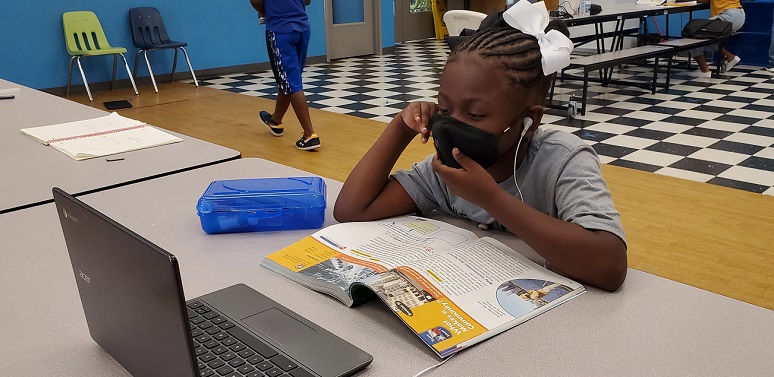Broadband Stats: Internet Prices Are Not Fueling Inflation

For decades, inflation in the United States had remained remarkably stable, spurring economic growth and helping Americans make financial decisions with confidence. Since the COVID-19 pandemic, however, disruptions in the supply chain and labor force, combined with other factors, have resulted in new concerns about rising prices. According to the U.S. Bureau of Labor Statistics, the overall inflation rate in the U.S. economy hit 7% from December 2020 to December 2021. But the factors that lead to inflation matter since the price increase of certain goods and services have severely outpaced
Broadband Prices Are Trailing Far Behind Inflation

America has an inflation problem. Consumer demand for goods and services is driving an increase in prices (the definition of inflation) to rates not seen since 1982. In December 2021, price increases for used cars jumped 37%, gasoline skyrocketed nearly 50%, and groceries climbed about 7% relative to December of the previous year. These increases are felt by all Americans. But the price of internet service has remained steady and is not mirroring these radical price spikes. According to the Bureau of Labor Statistics Consumer Price Index (CPI), the cost of internet services increased 2.6% in
Comcast Shares its Approaches to Closing the Digital Divide

America fast approaches its second holiday season with the COVID-19 pandemic still at play, and cable internet service providers (ISPs) continue their work to close the gaps in the digital divide wherever, whenever, and however they can. Leaders in the digital equity space spoke earlier this week at the Family Online Safety Institute's annual conference about the great work that took place to help remedy this situation over the past 20 months, and the work that remains to done to resolve this issue. Nowhere was the digital divide more visibly prominent at the onset of the pandemic than in
As Inflation Rises for Most of the Economy, Internet Prices Decline

The COVID-19 pandemic has disrupted supply chains and consumers have seen price increases on many goods. In fact, the Bureau of Labor Statistics recently released its Consumer Price Index (CPI) for the month of September which showed that, as compared to September 2020, overall prices for consumers increased 5.4%. However, the real price of internet services fell 2.6% in September as compared to last year. In other words, while much of the economy has seen significant prices increases, internet price changes are at rates below many other important goods and services purchased by consumers. As
Cable Broadband Providers Deploy Fast Internet to All Communities Regardless of Income or Race

As policymakers around the country continue to focus on getting all Americans connected to robust broadband service, it's important to understand how broadband is deployed today and where broadband infrastructure gaps exist, especially in urban areas where few research studies have looked at this issue. That's why NCTA examined data pulled from FCC and Census Bureau reports to determine where cable's broadband networks have been deployed in urban centers, and to find out what capabilities are available across different household categories. The findings from this report, "Building a Gigabit
Broadband Stats: Decreasing Costs for Consumers

For many Americans, more and more time is now spent online between work, school and entertainment. Fortunately, prices are going down for consumers while at the same time providing a significant value as people are using the service even more. With demand continuing to rise, cable providers will continue to invest heavily to upgrade and improve their networks to ensure that America’s broadband will be ready for whatever innovations the future brings. As broadband kept Americans connected over the past year, the real price of internet service fell by 2.7% according to the Bureau of Labor
How the Comcast Lift Zones Benefited the Boys & Girls Clubs of Greater Houston During a Crucial Year

This month, millions of children went back to in-person classes and started after-school programs for the first time in over a year due to the COVID-19 pandemic. But some of these programs never shut down. The Boys & Girls Clubs of America, a nonprofit that operates after-school programs for young people nationwide, remained opened in many locations to continue serving the families who depend on the clubs' services. In fact, in the greater Houston area, the Boys & Girls Clubs opened their doors for eight hours a day during the school week as soon as they were able to implement health and
Broadband Data: Closing the Digital Divide With Broadband Adoption Programs

While the COVID-19 pandemic has shone a light on the digital divide in the United States, cable internet service providers have long been committed to providing connectivity to as many Americans as possible. Using a multi-pronged approach, at the start of the pandemic in 2020 cable ISPs responded to the global health crisis by further expanding their successful broadband adoption programs to more qualifying households. Over the past decade, low-cost broadband adoption programs have connected over 14 million Americans to the internet. These low-cost programs offer broadband service for as low
Measuring the Monthly Value of a Broadband Connection

More than ever before, the past year has shown that a broadband connection is invaluable for Americans to continue working, learning, and socializing. And connectivity demands will only continue to increase as technologies advance and more services move online, making an internet connection a "must have" in the home. Fortunately, the cost of a monthly internet subscription only takes up a small part of average household expenses, according to the Bureau of Labor Statistics. When considering the limitless possibilities that a broadband connection unlocks for consumers, the value of today’s
Broadband Data: Connecting Every American

In today's world, an internet connection can make a huge difference in a person's life. But long before the COVID-19 pandemic accelerated the rate at which our lives moved online, America's internet service providers offered special, low-cost broadband adoption plans like Connect2Compete and Internet Essentials so that everyone could participate. In fact, over the last decade, more than 14 million customers connected to the internet via these discounted offerings. When the COVID-19 pandemic hit, work, school, and social lives were forced to move online. That accelerated need to get connected
